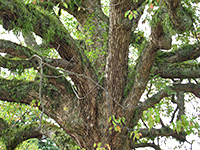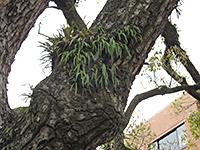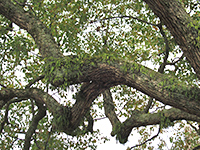Close upTo top page
Wonders We Live by
Lepisorus thunbergianus
The camphor tree (Cinnamomum camphora) planted in front of the Clock Tower is the symbol of Kyoto University, which is used for the University’s Emblem. If you look up at the tree from the base, then you will find some other plants growing on the trunk and the larger branches. The most abundant among such epiphytes (plants that grow upon another plant) is an evergreen fern with linear fronds (leaves) 10 to 30 cm long, Lepisorus thunbergianus (Family Polypodiaceae). This plant is widely distributed in Japan, as well as Korea, China, Indochina and the Philippines. It is familiar to Japanese people because it also grows on eaves (especially of thatched houses) and on stones in the yard. The Japanese name Noki-shinobu, meaning “eaves fern”, is derived from this habitat.
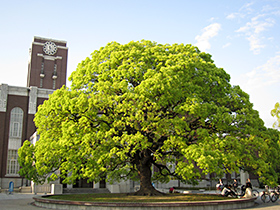
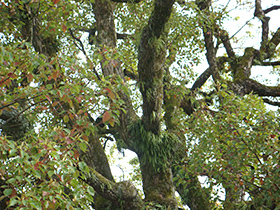
The density of epiphytes on a tree depends on the tree species because the morphology and texture of bark is very variable. Camphor trees belong to the group which houses many epiphytes but the ferns on the symbol tree are more abundant in comparison to the others growing under natural conditions. It seems that the traditional techniques of trimming garden trees make the camphor tree more comfortable for the ferns by developing the horizontal branches and by moderately reducing the leaves.
(Text by: Associate Professor Hidetoshi Nagamasu, Kyoto University Museum)
